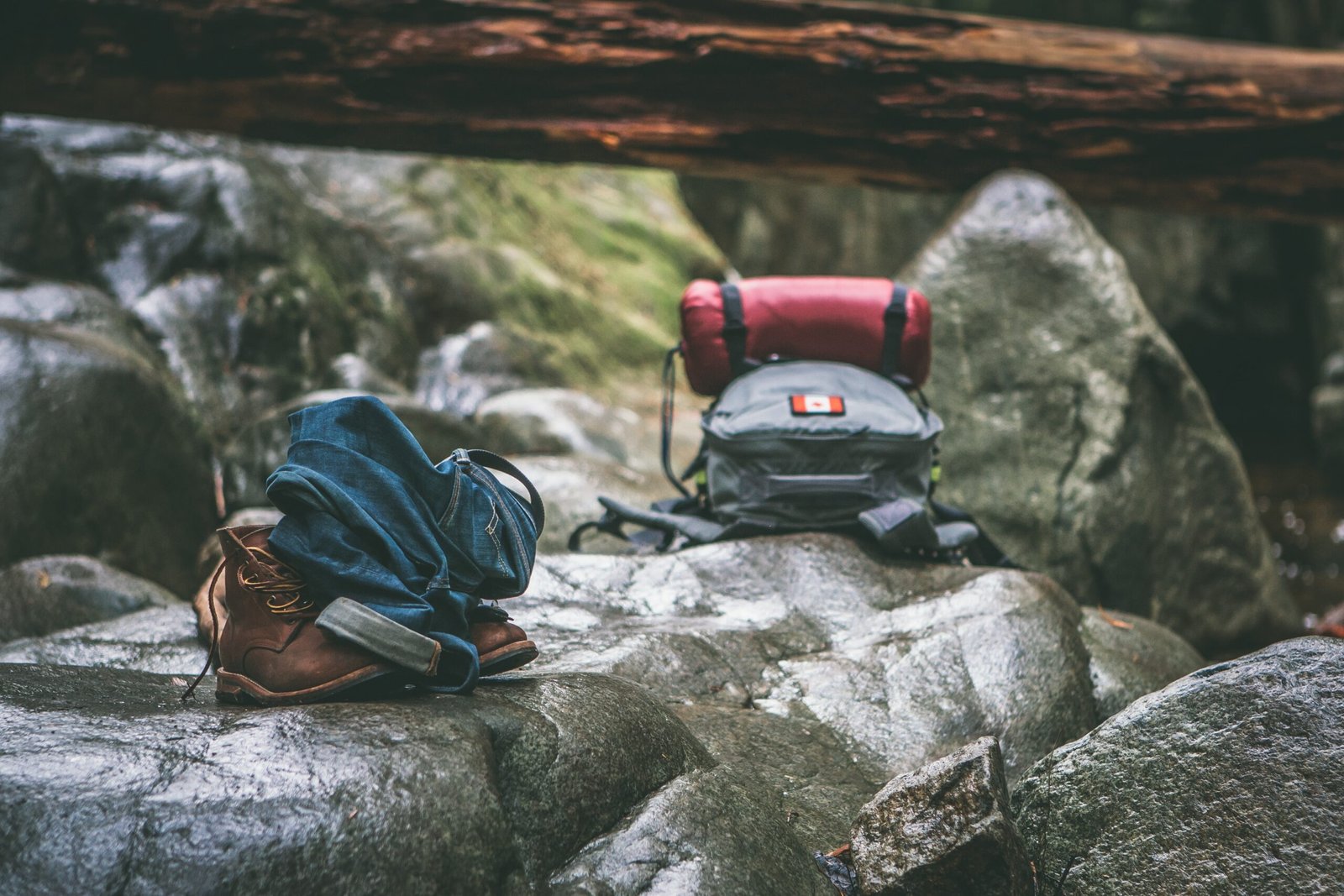Imagine a pair of hiking socks that not only keep your feet cozy and comfortable but also help combat unwanted moisture. Introducing the ultimate solution for all your hiking adventures – comfortable and moisture-wicking hiking socks. These socks are specially designed to provide the utmost comfort to your feet, allowing you to hike with ease and enjoyment. With their moisture-wicking properties, these socks keep your feet dry and fresh, minimizing the risk of blisters and discomfort. Experience the joy of hiking like never before with these amazing socks that prioritize your comfort and well-being.
Benefits of Comfortable and Moisture-Wicking Hiking Socks
Increased Comfort
When you’re out on the trails, comfort should be one of your top priorities. That’s where comfortable and moisture-wicking hiking socks come into play. These specialized socks are designed with extra cushioning and support to ensure that your feet stay comfortable throughout your hike. The soft and plush materials used in these socks help to reduce friction and prevent any chafing or discomfort. So, whether you’re going for a short hike or tackling a longer expedition, investing in comfortable hiking socks will make a world of difference to your overall comfort level.
Improved Moisture Management
Moisture management is another key benefit of wearing comfortable and moisture-wicking hiking socks. When you’re hiking, your feet are constantly working up a sweat. Without proper moisture management, this can lead to discomfort, blisters, and even odor. However, by wearing socks that are specifically designed to wick away moisture, you can keep your feet dry and comfortable. These socks have the ability to pull moisture away from your skin and allow it to evaporate, helping to regulate temperature and prevent bacterial growth. So, no matter how challenging the hike, you can rely on your hiking socks to keep your feet feeling fresh and dry.
Reduced Blisters and Hotspots
One of the biggest nuisances of hiking is the development of blisters and hotspots. They can quickly turn a pleasant hike into an uncomfortable experience. Thankfully, with the right hiking socks, you can significantly reduce the likelihood of blisters and hotspots forming. Comfortable and moisture-wicking hiking socks provide a snug and protective fit that helps to prevent friction and rubbing. The cushioning and padding in these socks also act as a barrier between your feet and the inside of your hiking boots, reducing the risk of blisters. So, by investing in the right pair of socks, you can say goodbye to those painful blisters and hotspots and enjoy your hike to the fullest.
Better Temperature Regulation
Another advantage of wearing comfortable and moisture-wicking hiking socks is their ability to regulate temperature. When you’re out on the trails, your feet can be subjected to various weather conditions, from scorching heat to chilly temperatures. Hiking socks made from materials like Merino wool and synthetic fibers have excellent insulating properties, helping to keep your feet warm in colder climates. These socks also have excellent breathability, ensuring that your feet stay cool and dry in warmer conditions. So, no matter what the weather throws at you, you can trust that your hiking socks will help regulate your foot’s temperature and keep you comfortable throughout your journey.
Materials Used in Hiking Socks
Merino Wool
Merino wool is a popular material used in hiking socks due to its excellent moisture-wicking and insulating properties. It is a natural fiber that is soft, breathable, and odor-resistant. Merino wool socks can effectively manage moisture, keeping your feet dry and comfortable. Additionally, they provide insulation, even when wet, making them suitable for a variety of weather conditions.
Synthetic Fibers
Synthetic fibers, such as nylon and polyester, are commonly used in hiking socks. These synthetic materials offer durability, moisture-wicking capabilities, and quick-drying properties. Synthetic socks are known for their ability to effectively manage moisture, preventing blisters and discomfort.
Bamboo Fiber
Bamboo fiber is a sustainable material that is gaining popularity in the hiking sock industry. It is known for its softness, breathability, and moisture-wicking properties. Bamboo socks are also hypoallergenic, making them suitable for those with sensitive skin.
Cotton and Blends
While cotton is a comfortable and breathable fabric, it is not the best choice for hiking socks. Cotton tends to absorb moisture and takes a long time to dry, resulting in discomfort and an increased risk of blisters. However, some hiking socks blend cotton with other moisture-wicking fibers, creating a balance between comfort and moisture management.

This image is property of images.unsplash.com.
Features to Consider in Hiking Socks
Cushioning
Cushioning is an essential feature to consider when choosing hiking socks. The level of cushioning you need will depend on the type of terrain and the support your feet require. Socks with extra cushioning provide added comfort and support, particularly for long hikes or rugged trails.
Arch Support
Arch support is crucial for maintaining proper foot alignment while hiking. Look for socks that offer adequate arch support to prevent fatigue and reduce the risk of injuries. This feature helps distribute pressure evenly across your foot, providing stability and reducing the chances of discomfort or pain.
Seamless Design
Seams in socks can cause irritation and rubbing, leading to blisters and hotspots. Opting for hiking socks with a seamless design minimizes friction and ensures a smooth and comfortable fit. Seamless socks are especially beneficial for those with sensitive skin or prone to blisters.
Reinforced Heel and Toe
High-quality hiking socks often have reinforced heel and toe areas. These reinforcements offer extra durability and protection in areas that are more prone to wear and tear. Reinforcements also help to minimize the risk of blisters and provide additional cushioning for enhanced comfort.
Compression
Compression socks provide graduated pressure to improve blood flow and reduce muscle fatigue. They are beneficial for hikers who require additional support or have circulation issues. Compression socks help to reduce swelling, promote faster recovery, and enhance overall performance.
Choosing the Right Fit and Size
Foot Length and Width
Proper fit is crucial when it comes to hiking socks. The socks should conform to your foot’s shape without being too tight or too loose. Consider the length and width of your foot when selecting the right size. Hiking socks that are too small may squeeze your feet, leading to discomfort and restricted blood flow. On the other hand, socks that are too large can cause bunching or slipping, which can result in blisters or uneven pressure points.
Sock Height
Hiking socks come in different heights, including ankle-length, crew, and knee-high options. The height you choose depends on personal preference and the type of hiking you plan to do. Ankle-length socks are suitable for shorter hikes or warm weather conditions, while crew and knee-high socks provide added protection and warmth for longer treks or colder climates.
Elasticated Cuffs
Look for hiking socks with elasticated cuffs to ensure a secure fit and prevent them from slipping down during your hike. Elasticated cuffs also help to keep debris out of your boots, minimizing irritations and discomfort.
Toe Box Design
Some hiking socks feature a specific toe box design that provides extra room for your toes to move comfortably. This design can help prevent blisters and allow for better circulation. If you have wider feet or prefer a roomier fit, consider selecting hiking socks with a toe box design that accommodates your foot shape.

This image is property of images.unsplash.com.
Different Types of Hiking Socks
Lightweight Hiking Socks
Lightweight hiking socks are ideal for shorter hikes or warm weather conditions. They offer sufficient moisture-wicking capabilities and comfort without excessive padding or insulation. Lightweight socks provide a more minimalist feel and are suitable for hikers who prefer a lighter, breathable option.
Midweight Hiking Socks
Midweight hiking socks strike a balance between comfort and insulation. They are suitable for moderate to challenging hikes and offer additional cushioning for extended wear. Midweight socks provide better protection against blisters and hotspots compared to lightweight socks.
Heavyweight Hiking Socks
Heavyweight hiking socks are designed for colder climates or more demanding hiking conditions. These socks often feature extra cushioning, insulation, and moisture-wicking properties. They provide maximum warmth, comfort, and protection for long hikes or treks in harsh environments.
Liner Socks
Liner socks are thin socks worn underneath your regular hiking socks. They serve as a moisture-wicking layer to keep your feet dry and reduce friction between your foot and the hiking sock. Liner socks can be beneficial for hikers who are prone to blisters or those looking for additional moisture management.
How to Care for Hiking Socks
Proper Washing Techniques
To prolong the lifespan of your hiking socks, it is essential to follow proper washing techniques. Before tossing them in the washing machine, check the manufacturer’s instructions. In general, it is recommended to wash hiking socks on a gentle cycle using cold water and mild detergent. Avoid using bleach or fabric softeners, as they can damage the fibers and reduce the socks’ performance.
Drying Methods
After washing, air drying is the best method to ensure the longevity of your hiking socks. Hang them up or lay them flat in a well-ventilated area away from direct sunlight or heat sources. Avoid tumble drying, as high heat can shrink the socks or weaken their elasticity.
Storage Tips
When not in use, store your hiking socks in a cool and dry place, away from moisture or pests. Consider storing them in an airtight container or ziplock bag to prevent any exposure to humidity. This will help maintain the quality and effectiveness of your socks, ensuring they are ready for your next hiking adventure.

This image is property of images.unsplash.com.
Popular Brands and Products
Darn Tough Hiker Boot Full Cushion Socks
Darn Tough is a renowned brand that specializes in durable, high-performance hiking socks. Their Hiker Boot Full Cushion Socks are a popular choice among hikers for their exceptional comfort and cushioning. Made from a blend of Merino wool, nylon, and Lycra, these socks provide moisture-wicking capabilities, durability, and a snug fit that prevents slipping or bunching.
Smartwool PhD Outdoor Light Hiking Socks
Smartwool is another well-known brand in the hiking sock market, and their PhD Outdoor Light Hiking Socks are highly regarded by outdoor enthusiasts. These socks are made with a blend of Merino wool, nylon, and elastane, offering moisture-wicking properties, temperature regulation, and odor resistance. The light cushioning and seamless design add to the overall comfort and performance of these socks.
Thorlo Experia Coolmax Hiking Socks
Thorlo Experia Coolmax Hiking Socks are designed for maximum moisture management and comfort. These socks combine Coolmax fabric with Thorlo’s exclusive padding technology to provide ample cushioning while maintaining breathability. The lightweight design, arch support, and blister prevention features make them a popular choice for hikers looking for a balance of performance and comfort.
Reviews and Recommendations
Customer Reviews
Hikers who have tried comfortable and moisture-wicking hiking socks often rave about their benefits. Many customers appreciate the increased comfort, reduced moisture, and prevention of blisters that these socks offer. They mention enjoying longer hikes without discomfort, even in challenging conditions. Customers also highlight the durability and quality of reputable brands mentioned above, emphasizing their investment-worthy nature.
Expert Recommendations
Experts and outdoor enthusiasts recommend investing in high-quality hiking socks that cater to your specific needs. They emphasize the importance of moisture-wicking properties, proper fitting, and cushioning. They also suggest considering the terrain, weather conditions, and the length of your hike when choosing the right pair of socks. Experts agree that comfortable and moisture-wicking socks play a significant role in enhancing the overall hiking experience.
Conclusion
When it comes to hiking socks, comfort and moisture management are key. By investing in comfortable and moisture-wicking hiking socks, you can enjoy increased comfort, improved moisture management, reduced blisters, and better temperature regulation. With a range of materials, features, and types available, finding the right pair of hiking socks is essential for a successful and enjoyable hiking experience. Consider factors such as cushioning, arch support, seamlessness, reinforcements, and compression when selecting the perfect fit. Remember to care for your hiking socks properly to ensure their longevity. With popular brands like Darn Tough, Smartwool, and Thorlo offering high-quality options, you can trust in the performance and reliability of these hiking essentials. So, gear up with comfortable and moisture-wicking hiking socks, and let your feet enjoy the adventure as much as you do!
Hi there! I’m the Editor, experienced outdoor development specialist, mountaineer and the mind behind ‘Country Rambler.’ I’m thrilled to welcome you to our website, your go-to destination for all things hill walking and rambling. Whether you’re an experienced adventurer or just dipping your toes into the great outdoors, I’ve got you covered. From providing guidance on essential gear, like boots and jackets, to sharing trail tips that range from peaceful paths to challenging peaks, I’ve got everything you need to embark on your next adventure. Stay in the loop with our fresh news updates and trail information. So, lace up those boots and join me as we explore the breathtaking landscapes together. Happy wandering!
